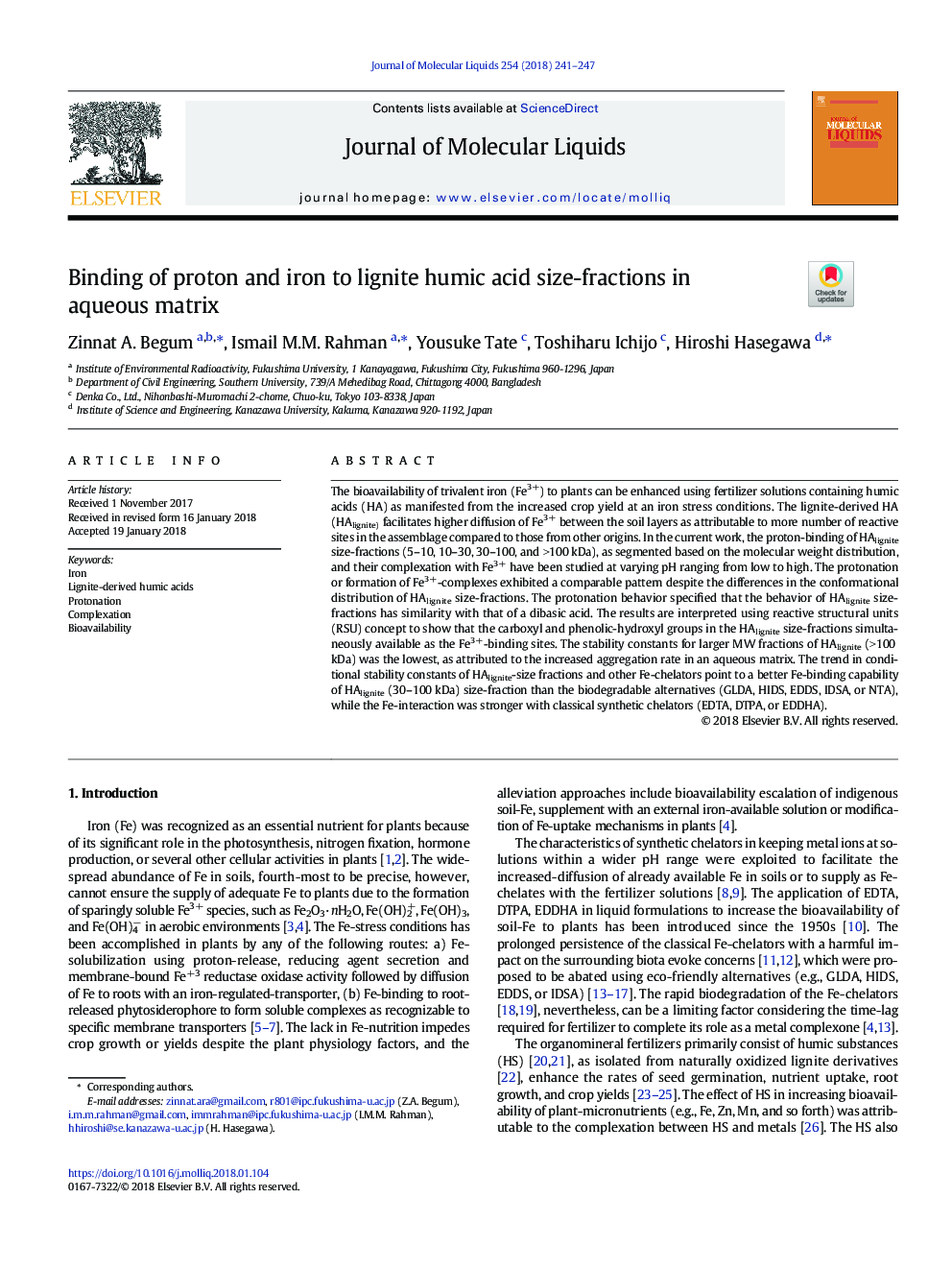| Article ID | Journal | Published Year | Pages | File Type |
|---|---|---|---|---|
| 7843012 | Journal of Molecular Liquids | 2018 | 7 Pages |
Abstract
The bioavailability of trivalent iron (Fe3+) to plants can be enhanced using fertilizer solutions containing humic acids (HA) as manifested from the increased crop yield at an iron stress conditions. The lignite-derived HA (HAlignite) facilitates higher diffusion of Fe3+ between the soil layers as attributable to more number of reactive sites in the assemblage compared to those from other origins. In the current work, the proton-binding of HAlignite size-fractions (5-10, 10-30, 30-100, and >100â¯kDa), as segmented based on the molecular weight distribution, and their complexation with Fe3+ have been studied at varying pH ranging from low to high. The protonation or formation of Fe3+-complexes exhibited a comparable pattern despite the differences in the conformational distribution of HAlignite size-fractions. The protonation behavior specified that the behavior of HAlignite size-fractions has similarity with that of a dibasic acid. The results are interpreted using reactive structural units (RSU) concept to show that the carboxyl and phenolic-hydroxyl groups in the HAlignite size-fractions simultaneously available as the Fe3+-binding sites. The stability constants for larger MW fractions of HAlignite (>100â¯kDa) was the lowest, as attributed to the increased aggregation rate in an aqueous matrix. The trend in conditional stability constants of HAlignite-size fractions and other Fe-chelators point to a better Fe-binding capability of HAlignite (30-100â¯kDa) size-fraction than the biodegradable alternatives (GLDA, HIDS, EDDS, IDSA, or NTA), while the Fe-interaction was stronger with classical synthetic chelators (EDTA, DTPA, or EDDHA).
Related Topics
Physical Sciences and Engineering
Chemistry
Physical and Theoretical Chemistry
Authors
Zinnat A. Begum, Ismail M.M. Rahman, Yousuke Tate, Toshiharu Ichijo, Hiroshi Hasegawa,
